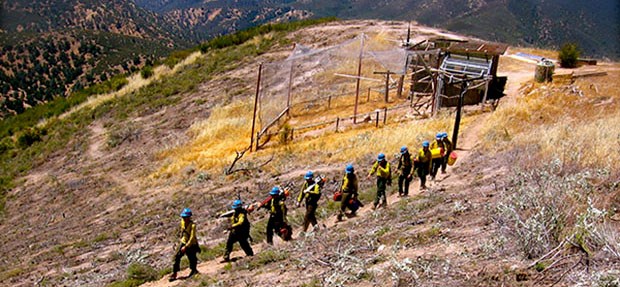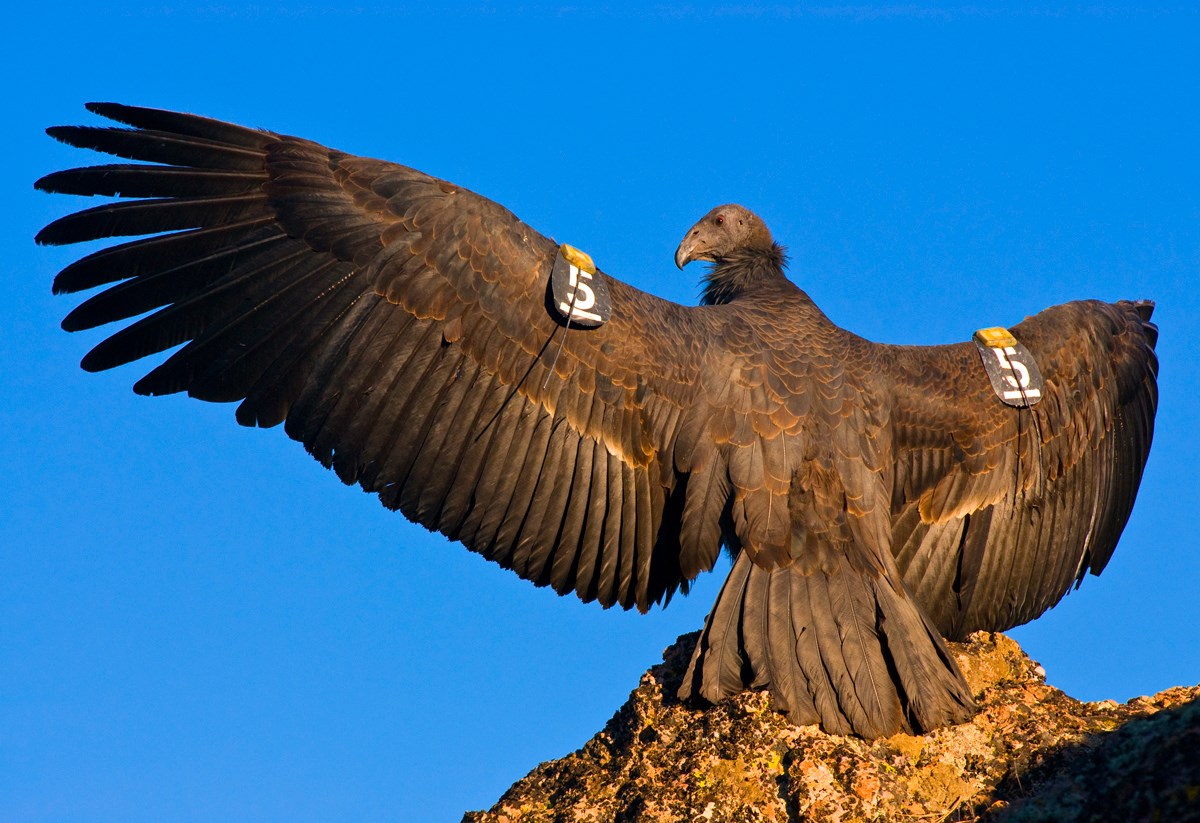Last updated: January 27, 2017
Article
Wildland Fire: Condor Program Defensible Space at Pinnacles

NPS / J. Hanks
“In this naturally fire-prone habitat, we need to anticipate that fire could burn rapidly through any part of the park and surrounding landscape. Planning ahead and taking action will reduce risk to our staff, visitors, and special resources.”—Denise Louie, chief of resource management, Pinnacles National Monument
During summer 2012, the San Francisco Bay Area hazardous fuels crew completed a series of defensible space projects at Pinnacles National Monument. This included routine vegetation removal around administrative buildings and roadsides in Bear Gulch, the primary corridor on the east side of the park, where there is one way in and one way out. These buildings, which include park headquarters, and the main park road, are treated on an annual basis because they provide critical services, emergency evacuation, and access for the majority of visitors and staff at any given time. However, the most extensive component of the 2012 work was in a more remote area of the park dedicated to research and the California Condor Recovery Program.
Employee Safety
Approximately 100 feet of vegetation was cut around the flight pen and observation station, two structures at the top of a ridge used by the condor program. Additional clearance also extended beyond the structures to improve a helicopter landing zone. The objective of fuel reduction at this location was to ensure that if a fire started in the park while employees were working at this site, they would be able to shelter in place until fire personnel determined it was safe to leave. Throughout the year, employees and interns travel to this location on a steep, winding, narrow dirt road surrounded by chamise chaparral, a highly flammable vegetation type. This combination of topography and fuel mirrors conditions in which several fire fatalities have occurred. Ground evacuation during a wildfire is potentially too dangerous given the primitive condition of the road, potential visibility problems due to smoke, and the possible rapid spread of fire, which is likely to affect the road if it was moving upslope.
Helicopter evacuation may or may not be available based on smoke, weather, and other aircraft priorities, but if available, a safe landing zone is imperative. After the chamise chaparral around the flight pen was cut this year, the neighboring Cal Fire unit completed a successful helicopter landing at the site to confirm the landing zone was sufficiently clear of vegetation. By coincidence, the charred remains of chamise chaparral burned in the 1998 Stonewall Fire were exposed when live plants were cut in the project area, demonstrating the realistic scenario of fire racing to this ridgetop.
Operational Leadership
This project reinforces the commitment to operational safety at Pinnacles. Risk management is a top priority at all national parks, especially for employees working in the backcountry. Identification of job hazards and mitigation to reduce exposure to risk is a standard procedure for all tasks and is fundamental to the principles of operational leadership.
“Knowing the reality of the fire environment at Pinnacles, I can honestly say the work we did this year will significantly increase survivability for anyone working up there,” said project manager Jeff Panetta, a fire battalion chief for the park. “That goes for the condors too.”
Other fire preparedness measures taken by the condor program included staff fire training and maintaining a supply of Nomex flame-resistant clothing, fire shelters, and other fire gear for staff who will remain at the established safety zone until they can leave the ridgeline safely. The goal is to avoid ever needing any of it; if it is a red flag day or there is an active fire nearby, work is redirected, and staff will not go to the flight pen until conditions are safe again.

NPS / Gavin Emmons
Condors and Fire
Although the number one concern is for human safety, maintaining defensible space around the condor structures does increase the likelihood that any enclosed condors will also survive a fire. Up to six birds may be in the flight pen at once, while they are undergoing blood tests and other health screening, maintenance of tracking equipment, or getting ready for release into the wild for the first time. The loss of six birds for most species would not be a significant management concern, but California condors are still recovering from near extinction after being listed as federally endangered in 1967. Since 2003, Pinnacles National Monument has been a release site for an interagency captive-breeding program. Although the condor population has made a gradual comeback from 22 birds in 1982, there are still only 232 California condors in the wild today.
Extra wildfire protection measures have been taken on behalf of California condors in the past as well. A group of eight condors managed by the Ventana Wildlife Society was relocated to Pinnacles for refuge during the 2008 Basin Complex in the Los Padres National Forest when the Gallery fire threatened the captive facilities on the Big Sur coast. After the birds were removed, the fire destroyed the facilities, but they were later rebuilt.
Pinnacles Chief of Resource Management Denise Louie was highly supportive of the defensible space work at the flight pen. “In this naturally fire-prone habitat, we need to anticipate that fire could burn rapidly through any part of the park and surrounding landscape,” she said. “Planning ahead and taking action will reduce risk to our staff, visitors, and special resources.”
Contact: Jennifer Chapman, fire communication and education specialist
Email: e-mail us
Phone: (415) 464-5133
